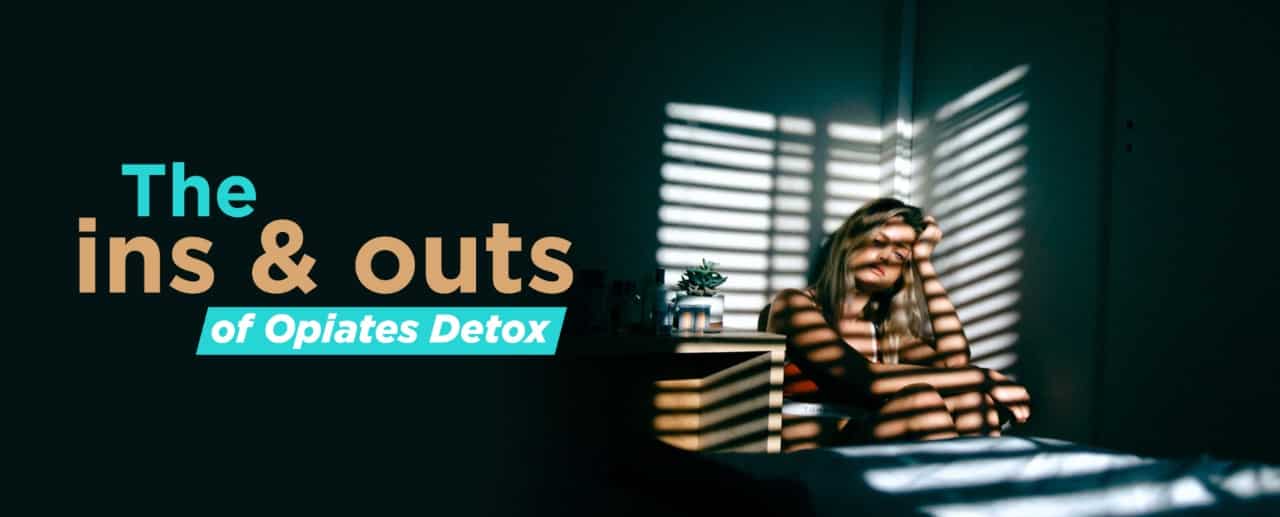
The United States is currently facing an epidemic of immense proportions, the opioid epidemic. People are getting addicted to prescription opioids, which leads to prescription drug abuse, drug dependence, withdrawal, overdose, and death. The risks that come from the misuse of prescription drugs are well known now as a result of this epidemic, so many people who are hooked do eventually come around to quitting. When a person does decide to go for Opiate Detox, they will usually have to face a challenging initial obstacle, opiate withdrawal. Prescription drug addiction and opiate detox can be extremely uncomfortable and dangerous in certain situations.
Here’s what to expect from inpatient opiate detox:
According to the latest statistics from National Institute on Drug Abuse, approximately 11.4 million people in the United States and around 36 million people worldwide abuse opioids. Narcotic pain relievers include:
Prescription painkillers, also known as opiates or opioids, are drugs used to treat pain after a medical procedure. The drugs are highly addictive and with time, your body becomes desensitized, and you’ll need higher doses to feel its effects, this is called drug dependence. This physical dependency means that a person’s body relies on the presence of the drug to function properly.
If you stop taking these drugs after a period of time, and you’re physically dependent, you will experience several symptoms of withdrawal. Opiate Detox can be categorized as mild, moderate, moderately severe, and severe. Your healthcare provider can determine this by evaluating your opioid use history and symptoms.
Though opiate withdrawal is not typically life threatening, the process can lead to symptoms that are difficult to manage. Going through withdrawal is challenging but getting rid of your dependence is a crucial first step in living a healthy and active life; the best way to do this is through a residential inpatient detox.
Symptoms and side effects of opioid withdrawal.
Opiate withdrawal occurs in two phases. The first phase includes several symptoms, such as:
The second phase is marked by:
These initial phases, which can last anywhere from a week to a month, can be followed by long-term withdrawal symptoms that may involve emotional or behavioral issues.
Opioid withdrawal can be pretty uncomfortable, and many people continue to take these drugs to avoid unpleasant withdrawal symptoms, or they try to manage these symptoms on their from home. Detoxing from home is highly dangerous and not recommended.

The detox method for opioids varies from person to person, depending on the type of drugs they’ve been exposed to and considering how it may have destroyed their mental and physical health. It is best to get the detox at a recovery center that is medically assisted and supported by trained specialists.
An inpatient detox program protects you by having a team monitor your vital signs and helps keep you comfortable by using a medical approach to mitigate the symptoms you feel while the drugs circulating in your bloodstream leave the body. This is the first step towards stabilization and preparation for long-term addiction treatment.
Many people try their hand at detoxing at home either due to lack of money or lack of information. Self-detox can rarely be safe and comes with a lot of dangers. People may experience extreme withdrawal symptoms and give into drug use to make the symptoms go away, this cycle may cause a person to become demotivated by failed efforts
Nausea and vomiting can be significant symptoms during the withdrawal process. Diarrhea is another very uncomfortable and potentially dangerous withdrawal symptom. Loss of fluids and electrolytes from diarrhea can cause the heart to beat abnormally, leading to circulatory problems and even heart attack.
Specific withdrawal symptoms can be deadly. Not knowing how to deal with such a situation, you can put your life in danger. Families are usually not trained to cope up with the withdrawal symptoms and lack information to handle them. An inpatient rehab facility has 24-hour support staff specializing in managing your symptoms and ensuring your safety.
Seeking help for opioid addiction will improve your overall health and reduce your risk of relapse and complications related to opioid addiction. Talk to your doctor or healthcare provider about treatment programs. Once you successfully get through detox, you will feel an overall improvement in your physical and mental health.
Are you struggling with opiate addiction? Are you looking to give yourself the best detox experience to start your road to recovery off right? Call us and talk to one of our care coordinators for free. Opus Health offers residential inpatient detox and aftercare to set you up with the physical and mental strength to overcome your opiate addiction.
Speak with our dedicated Recovery Advocates to find the right personalized treatment approach for you.
All calls are 100% free and confidential
